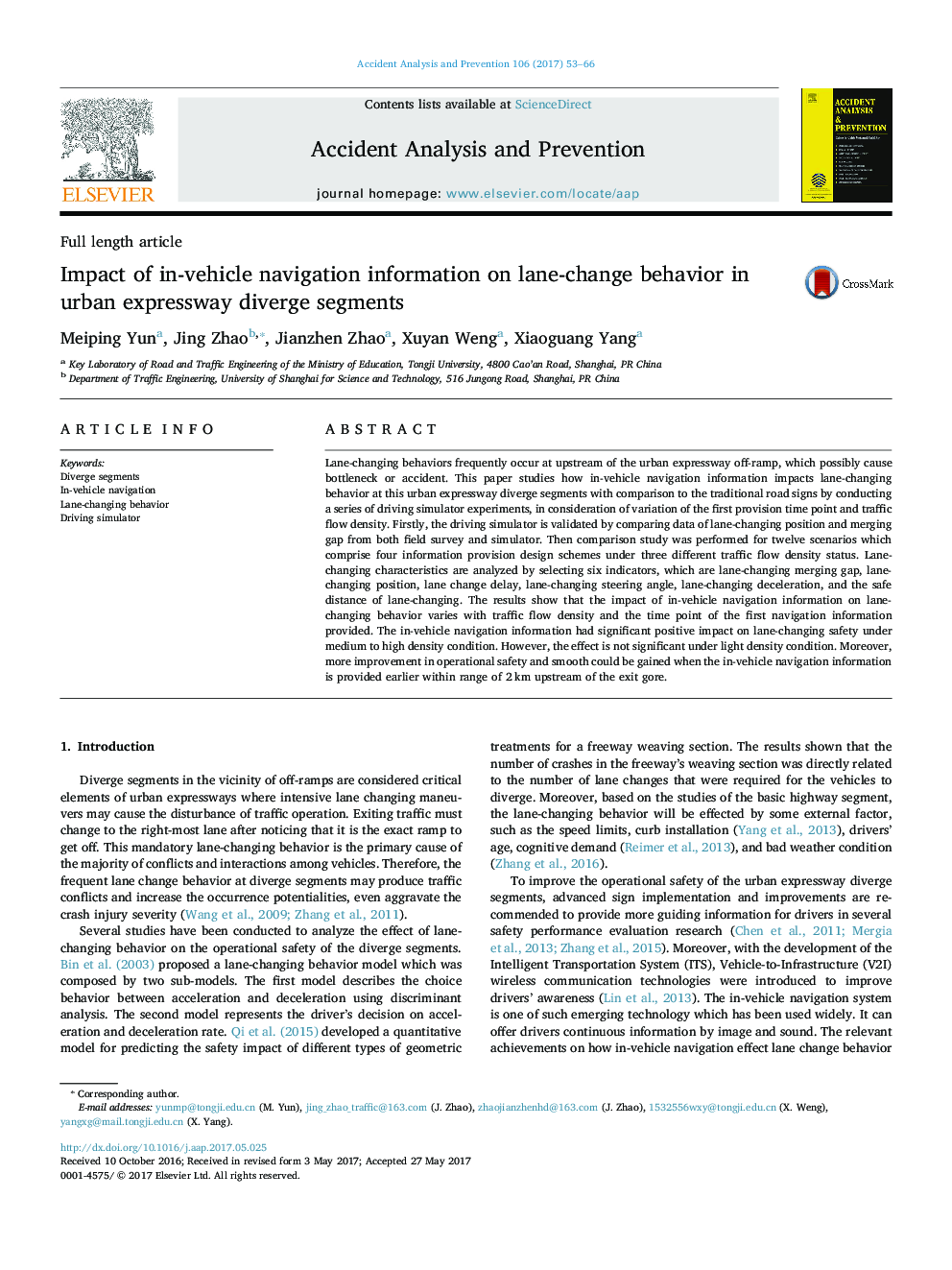| Article ID | Journal | Published Year | Pages | File Type |
|---|---|---|---|---|
| 4978671 | Accident Analysis & Prevention | 2017 | 14 Pages |
Abstract
Lane-changing behaviors frequently occur at upstream of the urban expressway off-ramp, which possibly cause bottleneck or accident. This paper studies how in-vehicle navigation information impacts lane-changing behavior at this urban expressway diverge segments with comparison to the traditional road signs by conducting a series of driving simulator experiments, in consideration of variation of the first provision time point and traffic flow density. Firstly, the driving simulator is validated by comparing data of lane-changing position and merging gap from both field survey and simulator. Then comparison study was performed for twelve scenarios which comprise four information provision design schemes under three different traffic flow density status. Lane-changing characteristics are analyzed by selecting six indicators, which are lane-changing merging gap, lane-changing position, lane change delay, lane-changing steering angle, lane-changing deceleration, and the safe distance of lane-changing. The results show that the impact of in-vehicle navigation information on lane-changing behavior varies with traffic flow density and the time point of the first navigation information provided. The in-vehicle navigation information had significant positive impact on lane-changing safety under medium to high density condition. However, the effect is not significant under light density condition. Moreover, more improvement in operational safety and smooth could be gained when the in-vehicle navigation information is provided earlier within range of 2Â km upstream of the exit gore.
Keywords
Related Topics
Physical Sciences and Engineering
Chemical Engineering
Chemical Health and Safety
Authors
Meiping Yun, Jing Zhao, Jianzhen Zhao, Xuyan Weng, Xiaoguang Yang,
